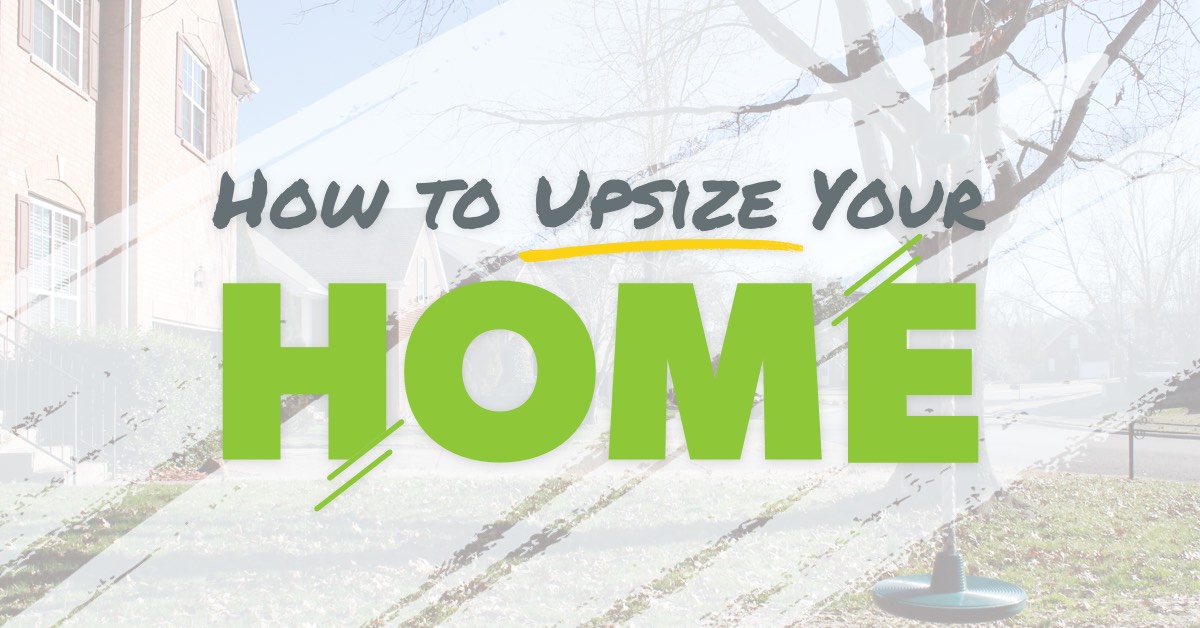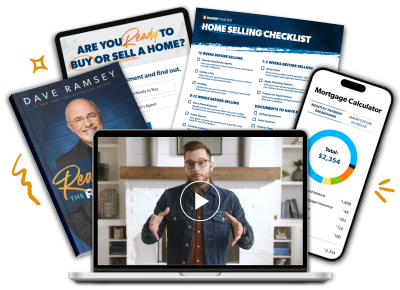
When Jake and Ashley bought their cozy, 1,200-square-foot cottage, the snug little house was just the right size for the newlywed couple. But seven years and three kids later, their once-perfect home is bursting at the seams. Their two boys share a bedroom while all five family members compete for space in the cramped living room and kitchen.
Maybe you can relate to Jake and Ashley’s situation. More than a third of all home buyers last year were families with kids. And 35% of sellers in their 30s said the main reason they sold their home was because it was too small.1 Or you might be on the other end of the spectrum—nearing retirement and wanting more room in your house so all the kids and grandkids can stay at Grandpa and Grandma’s.
But there’s a lot to consider if you want to upsize the right way. We boiled it down to three simple steps to help homeowners who want to upgrade their home without downgrading their finances.
Step 1: How Does Your Current Mortgage Fit?
As with any journey, you need to know where you are now to get to where you’re going. So Jake and Ashley start by digging into their current mortgage. They were super conservative when they bought their home, making a 20% down payment on the $125,000 house (smart!). Their mortgage payment was around $900 a month—a stretch for them.
Find expert agents to help you buy your home.
A few years ago, they considered buying a larger home but quickly decided it wasn’t the right time. They knew a larger home would mean a bigger mortgage payment, but they were still just managing to make their $900 payment with not much left over.
They didn’t want to sign up for more house than they could afford, so they decided to work hard for a raise and pay down more of their current mortgage balance before tackling a bigger one. These changes would make a larger home more affordable.
If you’re considering a move like Jake and Ashley’s, it’d be smart to follow their example before deciding to upsize your home—and your payment.
Step 2: What’s Your Potential Profit?
The best news for Jake and Ashley is the equity they’ve built up in their tiny home. (Equity is just the fancy word for how much your home is worth minus how much you owe on it.) Remember, they bought the home for $125,000—but it’s been several years, so the value has now increased by about $15,000. That’s the beauty of property appreciation, baby!
Now, they’ve still got $62,000 left to pay on their mortgage. So after they subtract that from the value of the home, they get $78,000 in equity.
|
Original Home Value |
$125,000 |
|
Growth in Home Value |
+ $15,000 |
|
Current Mortgage Balance |
- $62,000 |
|
Total Equity |
$78,000 |
After setting aside a portion of that $78,000 to pay their real estate agent’s commission and cover the costs to move, Jake and Ashley are looking at a potential profit of around $65,000 they can use on their next home!
Can you expect the same? It’s tough to predict how much profit you’ll make on your home since real estate trends are always changing. Plus, home prices vary from state to state, city to city, and even neighborhood to neighborhood. But if you want a ballpark estimate, recent home sellers earned a median of $60,000 more than what they originally paid for their home.2 Cha-ching!
On the other hand, one quarterly report found that about 2 million homes with a mortgage have negative equity, which means the homeowner owes more on the home than it’s worth.3 Selling a home with negative equity is a bad idea: You wouldn’t earn any money on the sale to go toward buying another home.
So check with a local real estate agent to learn how much buyers will be willing to pay for your home. Then you can decide whether you’ve built up enough equity to sell now or if you need to wait a little longer—like Jake and Ashley did.
Step 3: Set Your Budget and Look for a Good Deal
Jake and Ashley crunched the numbers and estimated they could afford to purchase a $265,000 home. But buying below their budget paid off for them with their last home, so they plan to aim smaller once again.
They set their home-buying budget to $215,000–235,000 and asked their real estate agent to keep an eye out for homes other buyers may have overlooked. Doing that means not as much competition, and hopefully, more home for less money. And with a smaller budget, they’d keep their monthly payment at a doable $1,300–1,600 on a 15-year mortgage.
If you want your new home to be a blessing and not a curse, never get a mortgage with a monthly payment that eats up too much of your income. Getting a smart mortgage means keeping the monthly payment to no more than 25% of your take-home pay on a 15-year fixed-rate mortgage—including private mortgage insurance (PMI), property taxes and insurance.
To pay off your house faster and avoid paying PMI, plan on a down payment of at least 20% of the home’s value. If that sounds too steep, never put down any less than 10%—otherwise, you’ll be charged out the wazoo in interest and fees and feel like you’ll never pay off your home.
To be confident about staying within your home budget, try out different home prices with our mortgage calculator to see what the monthly payments look like.
You may not have to max out your budget to find the kind of home you want—especially if you’re a repeat buyer with a large down payment like Jake and Ashley. Keep in mind that buyers often compete for move-in ready houses, driving up their prices. If you take a look at the neighborhoods you like and target below-budget houses that need a few simple upgrades, you could end up saving some cash when all’s said and done.
Want More Expert Real Estate Advice?
Sign up for our newsletter! It’s packed with practical tips to help you tackle the housing market and buy or sell your home with confidence—delivered straight to your inbox twice a month!
Moved Up and Moved In
Since starter homes like Jake and Ashley’s are in demand, their home sold quickly for asking price—plus they had plenty of time to choose their new home before moving out.
They found their new home in a nice neighborhood in a great school district. After putting $45,000 down on a $225,000 four-bedroom house at a 4% interest rate, they were able to pay cash for a few well-chosen upgrades and keep their monthly payment to around $1,600.
|
Purchase Price |
$225,000 |
|
Down Payment |
$45,000 |
|
Upgrades |
$20,000 |
|
Monthly Payment |
$1,600 |
Are You Ready to Move Up in House?
Moving up to a larger home can feel like a complicated task. But you’ll gain confidence by working with an experienced real estate agent. A good one will help you price and sell your current home on your timeline and guide you in your search for a new home you’ll love.
For a quick and easy way to find the top-performing agents in your area, try our RamseyTrusted® program. We only recommend agents who actually care about your financial values.
Did you find this article helpful? Share it!

We Hear You!
We’re considering adding the ability to save articles to your Ramsey account.




